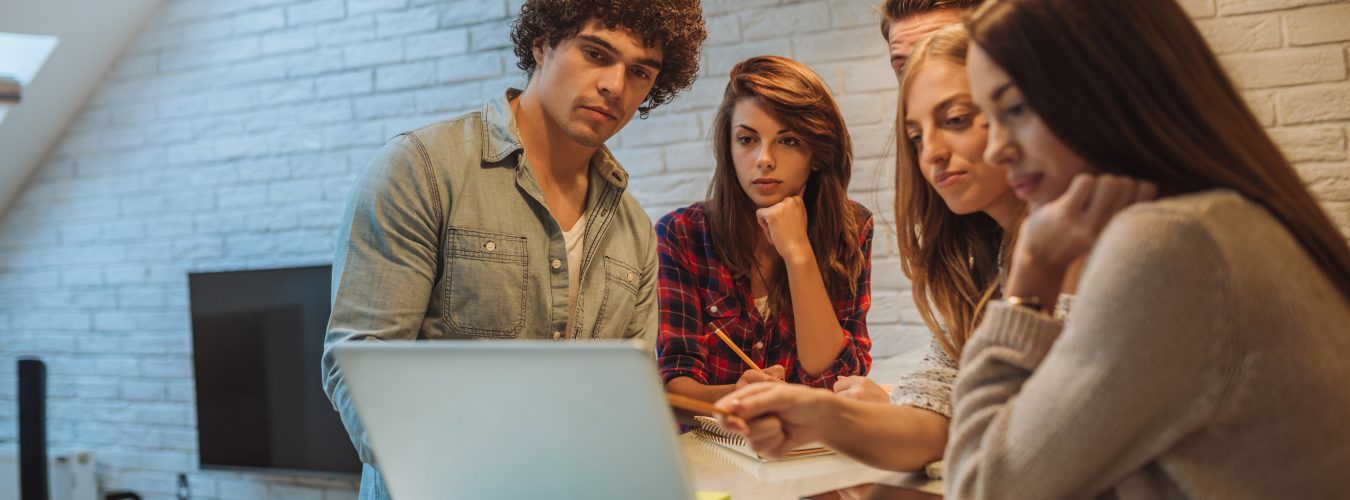
During this lockdown period, our learning designer colleagues from the Digital Learning team have been extremely busy delivering three webinars a week on using university supported tools for online learning. We, at the media team have also been looking at how we can support our university community from a video production aspect.
We have come up with producing several short video series providing top tips when producing media and ‘How to’ screen captures for Teams to get students and academic staff up and running on the system. These videos would, hopefully, provide guidance during this lockdown period as well as serving a purpose for when we return back to normal.
This is a short blog to share my experience of the highs and lows of producing a video of yourself, by yourself and with minimal equipment.
Making do with limited equipment
Because the lockdown happened so fast, we were caught off guard by not foreseeing the need to take any camera, mic or tripod equipment home with us. We were not allowed back into the office to collect anything, so all of the videos produced so far were filmed using our smartphones or iPad and whatever props came to hand around the home. Following Joe’s initial video tip on making a DIY tripod out of a plastic cup, I had fun experimenting with props found around the home; from making a taller tripod with a large cardboard tube and slots cut out to place the phone to more complex set up using a wine rack and masking tape to hold my phone in position whilst capturing some steps on the iPad.


The difficulties of filming yourself
I have to admit, transitioning from behind to in front of the camera was difficult; filming yourself is not as easy as it looks! To get started, I applied the following fundamental rules and checks before filming:
Background: Choose an uncluttered background to avoid any distraction for your audience, a plain wall is ideal.
Framing: I always try to frame to left or right of the screen. If I am talking to an audience, I would talk directly to the camera, if I was giving information, I would look to one side of the camera as if I was being interviewed.
Set your phone on horizontal position: Always film at a landscape rather than portrait mode.
Camera angle: For best positioning, I always make sure that the lens of the camera is in line with the eyes to avoid any unflattering angles.
Lighting: Avoid filming in front of a window as this will cause a silhouette, if you do, ensure you have sufficient lighting on your face to balance the light behind. I filmed with a window to one side and an ambient light directed to my face.
Audio: I found the audio from my smartphone and iPad was audible, but not really good enough quality, so purchased a very cheap 3.5mm microphone that plugs into the audio socket of my devices. This also helped to reduce the amount of noise as the microphone is closer to your mouth.

Tip: I did experience an issue of a ‘clicking’ noise on my recorded video which was annoying and puzzled me a great deal. My media team colleagues suggested that I turn on ‘Flight Mode’ on my phone and this resolved the issue.
Now for the difficult part of actually performing in front of the camera! I’m definitely not comfortable in front of a camera and found that memorizing a script and reciting it back was not the way forward as it looked a bit false. After many takes, I managed to go slightly off script and found this produced a more natural flow to the video.
To make editing easier, I would advise the following:
Closing your mouth before you speak: So easy to do, especially when frustration sets in after so many takes! I found that after making a mistake, I compose myself, think about what I am going to say and then say it. It doesn’t matter that the video is still recording because it can be edited out.
After delivering your piece to camera: Hold the pose and look at the camera for a few seconds, count to five in your head if that helps.
Get creative and have a go
This was the first time I have attempted at filming myself (DL top tips – 10. Using autocue app on iPad), I was a bit reluctant at first but once I got going, I found it to be quite a pleasant experience and had fun in the process. If you’ve never produced a video or filmed yourself before, I would definitely encourage you to get creative and have a go! All you need is a smartphone and a clip-on mic. There are some free software for video editing to download, this site list some the of more popular ones Shopify.com.
If you have any questions about video or audio production, the Digital Learning Media team is always on hand to help.
Please contact us at Digital-Learning@soton.ac.uk



Digital learning is diferent to face to face?